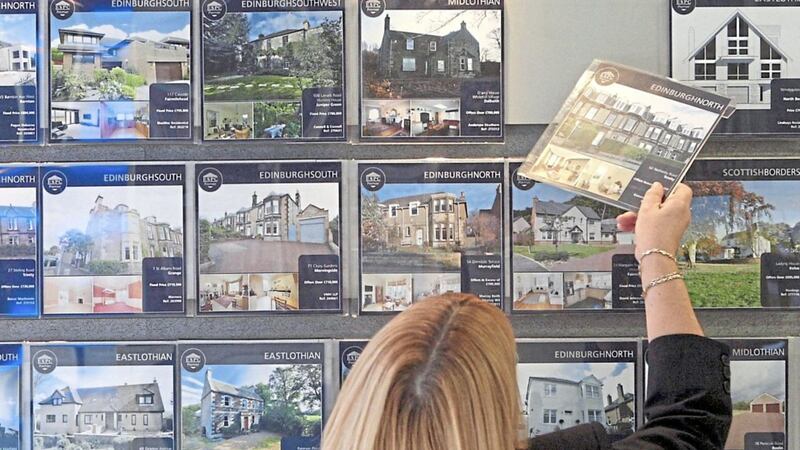THERE was no let-up in home buyer demand in Northern Ireland last month, with indicators for new buyer enquiries and newly agreed sales both ticking up from already high levels, according to the RICS Ulster Bank residential market survey.
New buyer enquiries rose according to a net balance of 75 per cent of respondents, and newly agreed sales increased according to a net balance of 65 per cent.
But the survey results suggest that the flow of properties being listed for sale is not keeping pace with buyer demand. A balance of 22 per cent of respondents pointed to an increase in new instructions to sell.
This mismatch between supply and demand is seen as a key factor in driving up house prices, with growth reportedly accelerating in Northern Ireland. All respondents said that prices rose last month. This continues the trend from the first quarter of the year. According to official figures, house prices in Northern Ireland were 6 per cent higher in Q1 than in the same period last year. This is the biggest annual rise in prices since 2016.
The average price for a house in Northern Ireland is £149,178 according to the figures, ranging from £128,320 in Armagh City, Banbridge and Craigavon to £175,813 in Lisburn and Castlereagh. Ards and North Down saw the biggest annual rise in house prices up 10.6 per cent to £172,551.
In terms of the outlook, Northern Ireland surveyors remain confident for sales activity, with a net balance of 74 per cent of respondents saying that they expect the number of homes sold to increase over the next three months. When it comes to prices, a net balance of 63 per cent expects rising prices between June and August.
But it’s not just the supply and demand dynamics that are causing house prices to rise. House builders’ costs have increased too - by 1.7 per cent in Q1 2021 and by 3.6 per cent between 1Q 2020 and 1Q 2021 according to the BCIS Private Housing Construction Price Index.
The majority (94 per cent) of respondents to the UK survey reported increases in costs. Of those, 44 per cent stated increases in cost of materials, 37 per cent indicated changes in both labour and material costs, 13 per cent stated sub-contractors’ costs while 6.0 per cent indicated labour costs.
Insulation, aggregates, timber and timber products, steel as well as shortages of building materials, higher costs of transport, energy and labour costs/availability remain among the key cost pressures mentioned by respondents.
Cost pressure is expected to have continued in the 2nd quarter, with respondents expecting their costs to continue rising by a further 2.1 per cent.
The key factors influencing business operations in the first quarter as identified by the respondents were: material availability (56 per cent), supply chain delays (17 per cent), material price increases (11 per cent), labour availability (11 per cent) and reduced productivity (6 per cent).
Rising material and labour costs, shortages of construction materials and labour (including skill shortages), planning system and compliance availability, are perceived to be biggest challenges for house builders in remainder of 2021.
With the ongoing supply and demand dynamics, plus the rising costs for home builders, those hoping for house price inflation to ease might have a bit to wait yet.
:: Sam Dickey is Northern Ireland residential property spokesman for RICS , the principal independent body representing professionals employed in the land, property and construction sectors







